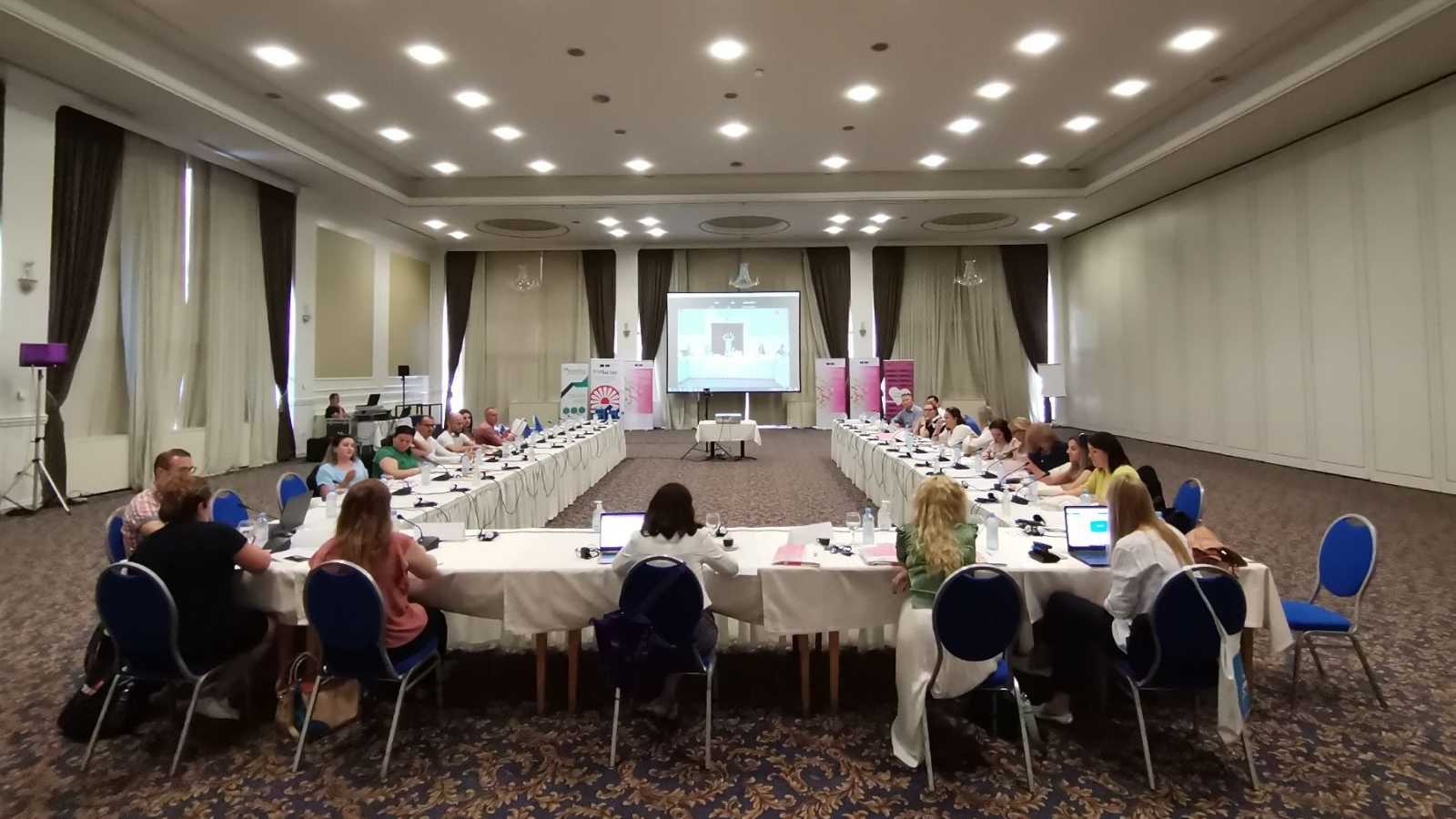Thirty-five labour inspectors enhanced their knowledge on protection from discrimination at workplace with focus on the public sector and related vulnerable groups, particularly Roma persons. They also learnt about differences between human trafficking for the purpose of labour exploitation vs. forced labour and discrimination at the workplace. For the majority of the participants, this training represented the first opportunity to learn about the anti-discrimination legislation and institutional framework protecting from discrimination at the workplace. Interactive training methods coupled with practical exercises encouraged discussions and in-depth learning of the participants.
Goran Neshevski, legal councilor in the Commission for Prevention and Protection against Discrimination presented the competences of the Commission and its work relevant for prevention and protection from discrimination at the workplace. He also presented some interesting and valuable data from the reports of the Commission emphasizing that the Commission dealt with 2 complaints about alleged discrimination during recruitment in the public sector.
Jasna Orovchanec Arangelovikj, expert in the field of anti-discrimination, presented some very useful and important information regarding the legal framework and different protective mechanisms and tools that are available to the citizens and persons facing discrimination. Furthermore, through practical examples and structured discussion, the participants looked at some cases on discrimination and had to determine the outcome of the cases, based on the given information.
The international expert on human trafficking for the purpose of labour exploitation, Klara Skrivankova, explained the continuum of exploitation ranging from minor violations of labour law to human trafficking for labour exploitation. She shared in a practical way the use of various indicators throughout a job cycle, which can be applied by labour inspectors to distinguish a violation of a labour law from a criminal offence. “Advertisements for the job may be used to see if there is a deception during the recruitment stage. Other proofs of deception may get collected by examining initially signed labour contracts and video records from the CCTV, by observing the work place, or talking to co-workers”- stressed Klara Skrivankova in her remarks. She further spoke about the gendered exploitation, profiling the male victims of trafficking.
Facilitators of the EU and Council of Europe joint ROMACTED 2 programme Dzengis Berisa, Fatma Bajram Azemovska, Almira Kaguri and Firdeza Zekirova presented the concept of Antigypsyism as a specific form of racism and discrimination against Roma people. Antigypsyism is a historically constructed, persistent complex of customary racism against social groups identified under the stigma “gypsy” or other related terms. ROMACTED facilitators noted the access of Roma to employment and barriers that face during and at their workplace. Also, the affirmative measures adopted by the state were presented as well that there is a lack of control mechanism measures to prevent the abuse of the affirmative measures and to provide their full enjoyment. The session was completed by video presentation with personal stories of Roma people who shared their barriers accessing employment.
The trainings were delivered jointly by the actions “Preventing and Combating Human Trafficking in North Macedonia” and “Promotion of Diversity and Equality in North Macedonia” in the framework of the joint European Union and Council of Europe programme “Horizontal Facility for the Western Balkans and Turkey 2019-2022”, in co-operation with the ROMACTED Programme “Promoting good governance and Roma empowerment at local level II”.

